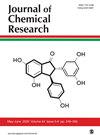Effect of coating MoS2 nanoflakes onto CuCo2O4 on the electrochemical performance as electrode materials of supercapacitors
IF 1.2
4区 化学
Q4 CHEMISTRY, MULTIDISCIPLINARY
引用次数: 0
Abstract
CuCo在 CuCo2O4 上涂覆 MoS2 纳米片对超级电容器电极材料电化学性能的影响
采用水热法在镍泡沫上合成了 CuCo2O4@MoS2 微流体,并研究了它们作为超级电容器电极的电化学性能。系统分析了添加 MoS2 对纳米复合材料比容量和循环稳定性的影响。研究发现,添加 MoS2 能显著提高 CuCo2O4 微流体的比容量,而循环稳定性则随 MoS2 含量的变化而变化。研究还提供了循环过程中 MoS2 含量、电化学行为和结构稳定性之间相互作用的竞争机理。值得注意的是,在放电电流密度为 0.003 A cm-2 时,CuCo2O4@MoS2-60 样品显示出令人印象深刻的 11.1 F cm-2 比容量,在 1800 次充放电循环后,容量保持率高达 94.6%。此外,通过制造对称超级电容器还展示了实际应用前景。该研究为合理设计和优化用于高性能超级电容器的 CuCo2O4@MoS2 纳米复合材料提供了宝贵的指导。
本文章由计算机程序翻译,如有差异,请以英文原文为准。
求助全文
约1分钟内获得全文
求助全文
来源期刊

Journal of Chemical Research
CHEMISTRY, MULTIDISCIPLINARY-
CiteScore
2.30
自引率
0.00%
发文量
66
审稿时长
1.0 months
期刊介绍:
The Journal of Chemical Research is a monthly journal which has a broad international authorship and publishes research papers and reviews in all branches of experimental chemistry. Established in 1977 as a joint venture by the British, French and German chemical societies it maintains the high standards set by the founding societies. Each paper is independently peer reviewed and only carefully evaluated contributions are accepted. Recent papers have described new synthetic methods, new heterocyclic compounds, new natural products, and the inorganic chemistry of metal complexes.
 求助内容:
求助内容: 应助结果提醒方式:
应助结果提醒方式:


